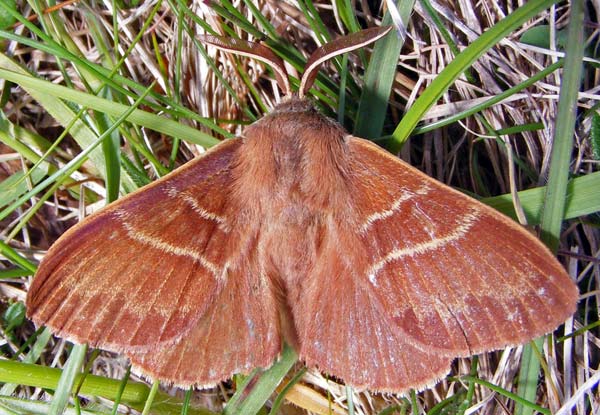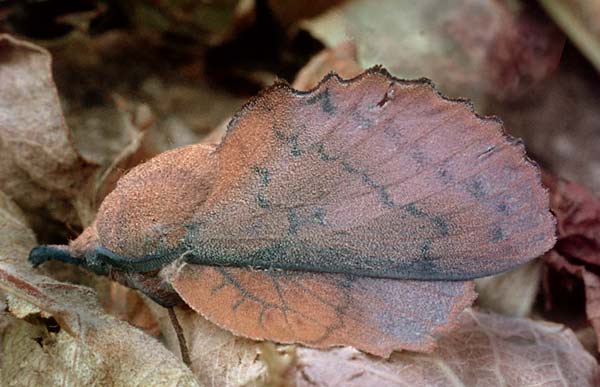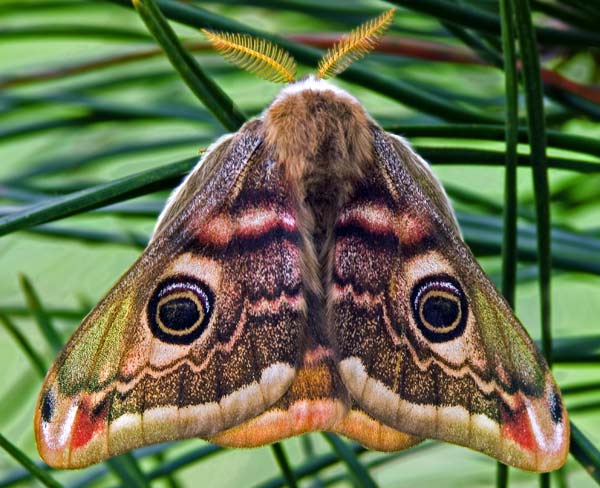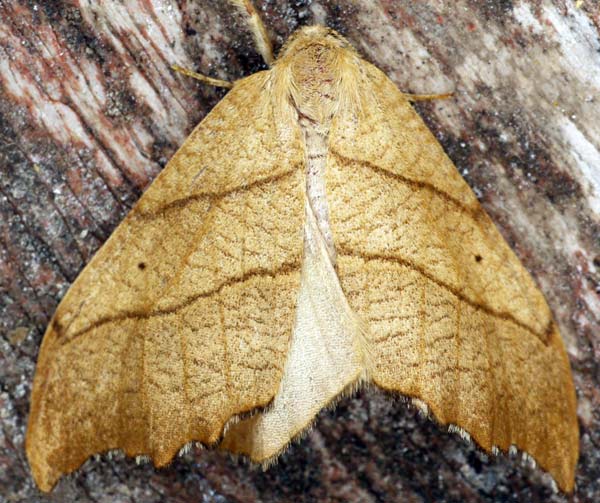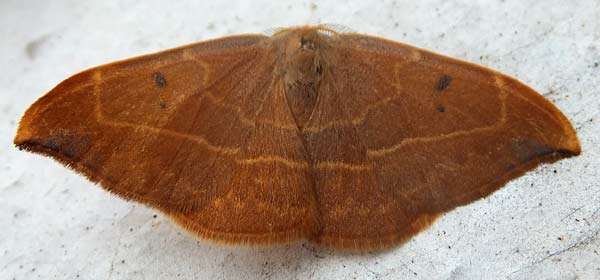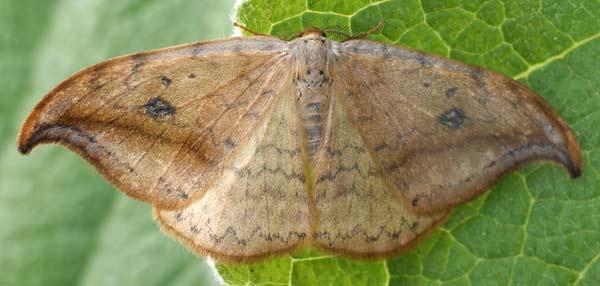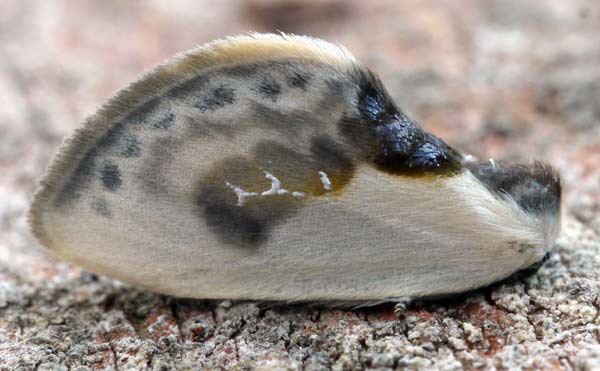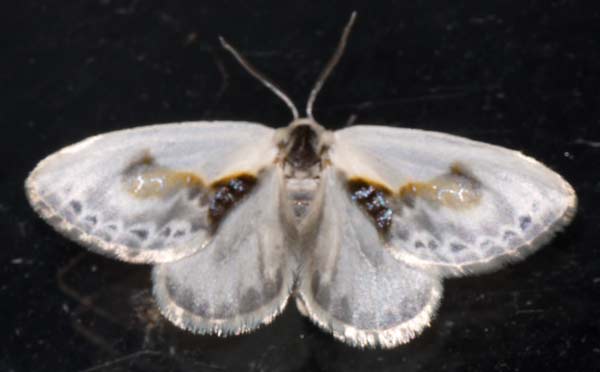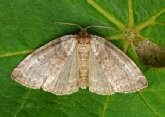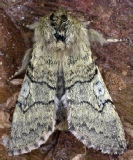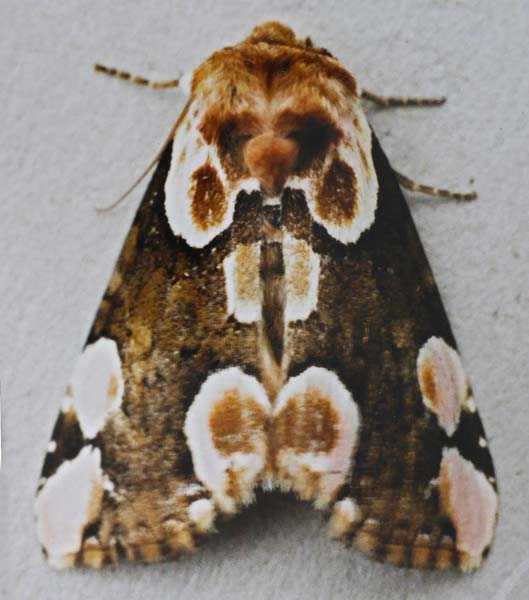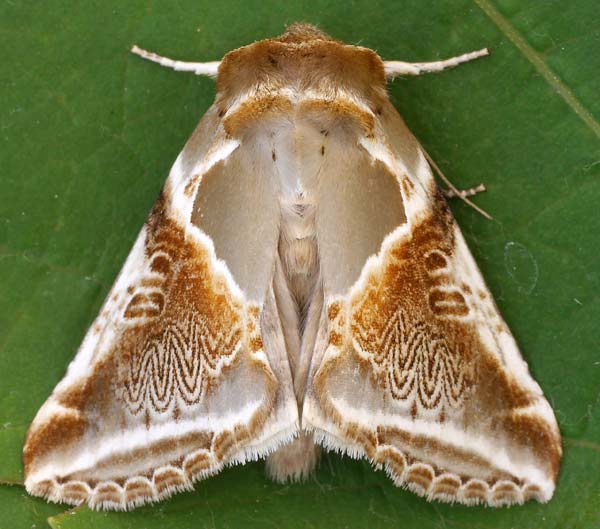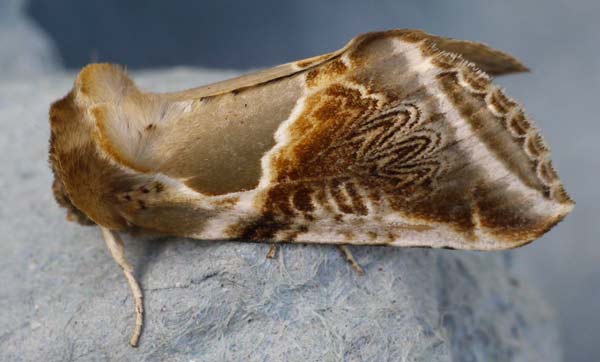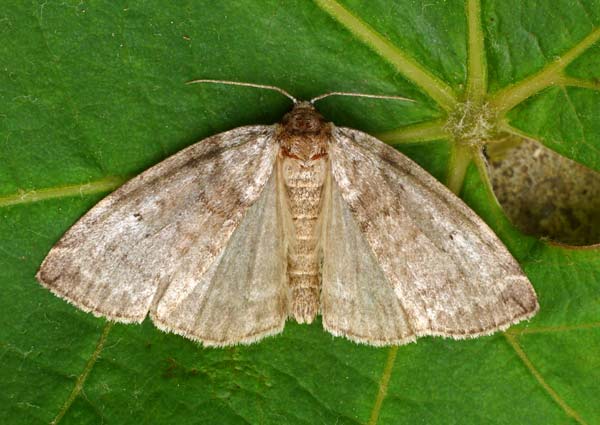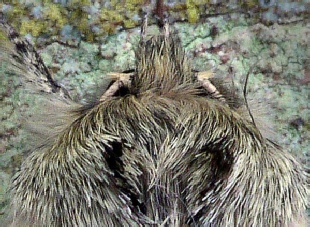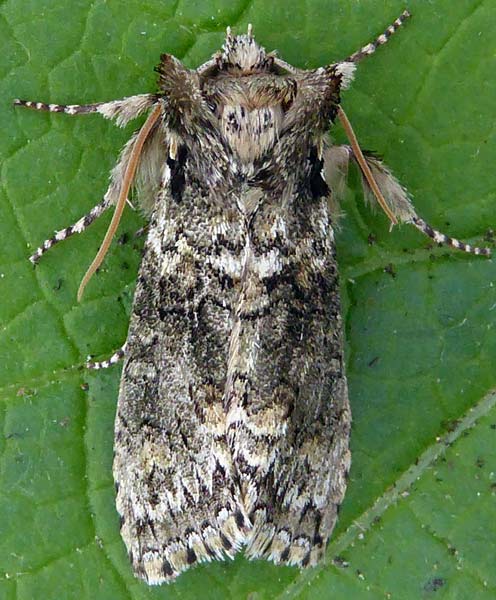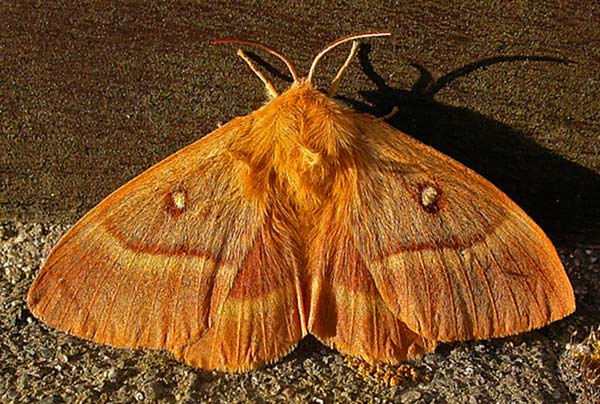Search the site for a moth name or other keyword
 NEXT
NEXT
NEXT
NEXT

6. Macromoths including Zygaenidae (Burnets) and Drepanidae (Hook-

To see an image click thumbnail ; image can be dragged about by an edge
To compare
this moth with other species click its green ‘Compare’ button
To go to another page
of moths click an arrow for ‘Next’ or ‘Previous’
Photo of Fox Moth by Graeme Davis
1637 Oak Eggar Lasiocampa quercus
Flying :Mainly May to August
Common
Female (about 18mm) is larger than Male (about 14mm). Varies in colour
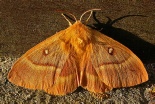
Oak Eggar -
Photo by David Owen
Five-
1654 Figure of Eighty Tethea ocularis
Flying :May, June, July
Common
1657 Common Lutestring Ochropacha duplaris
Flying :Late May, June, July, August
Common
1659 Yellow Horned Achlya flavicornis
Flying :Late February, March, April Common
Identified by orange antennae -
1660 Frosted Green Polyploca ridens
Flying : Mainly April and early May
Classified as ‘local’ but fairly common in Southern England and Wales
0014 Ghost Moth Hepialus humuli
Male has white forewings, Female Orange
Flying :June, July, August Common
Size very variable -
0015 Orange Swift Hepialus sylvina
Flying :August, September Common
Size very variable -
0017 Common Swift Hepialus lupulinus
Flying :May, June. Common
Size very variable -
0161 Leopard Moth Zeuzera pyrina
Flying :June, July, August
Common
0169 Six-
Flying :June, July, August Common
Six red spots on each forewing
0170 Five-
Flying :June, July, August
Common in South and South-
Five red spots on each forewing -
Becoming uncommon away from Southern chalk downs
0171 Narrow-
Flying :June, July, August
Five red spots on each forewing
Most Five-
0173 Festoon Apoda limacodes
Flying :June, July
Status Nationally scarce but seems to be increasing in the South
0380 Red-
Flying :June, July
Status Nationally scarce but probably under-
0374 Yellow legged clearwing synanthedon vespiformis
Flying :June, July
Status Nationally scarce but probably under-
0371 Lunar Hornet Moth Sesia bembeciformis
Flying :July, August
Common
1631 December Moth Poecilocampa populi
Flying :Mainly November, December
Common
1634 Lackey Moth Malacosoma neustria
Flying :July, August
Common
Female (about 18mm) is larger than Male (about 14mm). Varies in colour
1638 Fox Moth Macrothylacia rubi
Flying :May, June Common
Female (Forewing about 28mm) is larger than Male (about 23mm)
Female flies only at night; male mainly by day
1640 Drinker Euthrix potatoria
Flying : June, July, August Common
Female (Forewing about 30mm) is much larger than Male (about 23mm)
Male is also usually a rich brown colour whereas female is more yellow
1645 Scalloped Hook-
Flying :April, May, July, August (two generations) Common
Varied in colour
Rests with wings curved into a tube
1643 Emperor Saturnia pavonia
Flying :April, May. Common
Female (Forewing about 38mm) is larger than Male (about 30mm), but Male is more brightly coloured.
1642 Lappet Gastropacha quercifolia
Flying :June, July, August
Common in Southern England, the Midlands and East Anglia
1652 Peach Blossom Thyatira batis
Flying :Mainly May, June, July
Common
1646 Oak Hook-
Flying :May, June, July, August, September (two generations). Common
Varied in colour
1648 Pebble Hook-
Flying :May. June; July, August (two generations)
Common
1651 Chinese Character Cilix glaucata
Flying :April,May,June; July,August,September (two generations)
Common
Usually rests with wings together -
1653 Buff Arches Habrosyne pyritoides
Flying :June, July, August -
Common
Photo of Peach Blossom by Liz and Philip Rapley
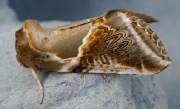
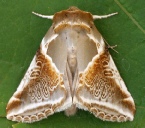
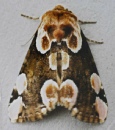
Thyatiridae






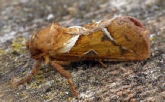

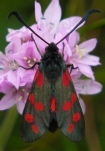


Hepialidae
Zygaenidae
Lasiocampidae

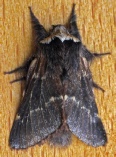

Cossidae
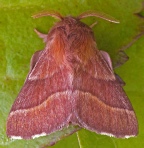

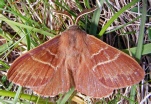


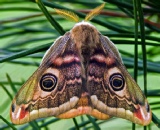
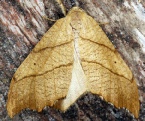






Limacodidae

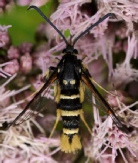
Sesiidae A family containing about a dozen UK moths -

Saturniidae
Drepanidae
Photo of male Ghost Moth by Graeme Davis
Photo of Red-
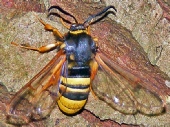
Photo of Lunar Hornet Moth by Graeme Davis
Female Male
Female Male

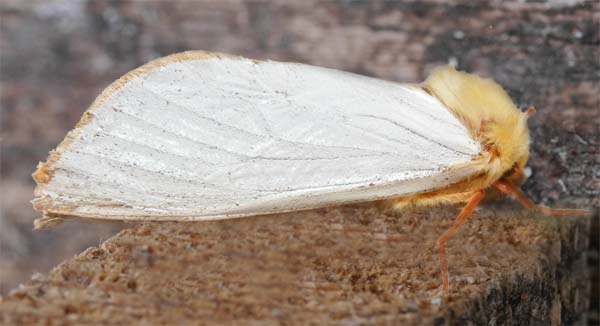
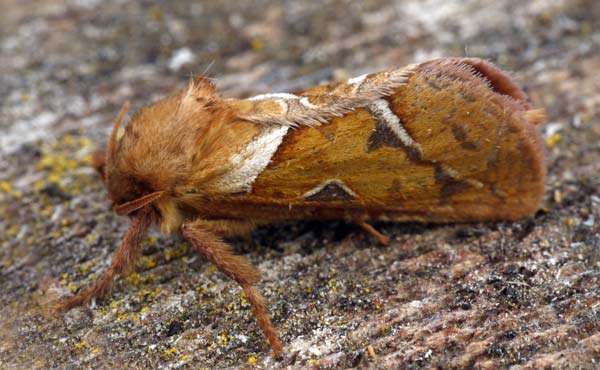
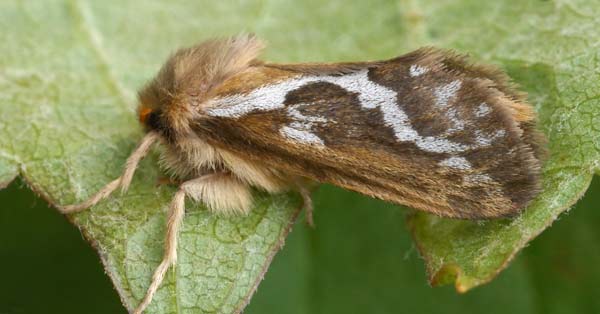
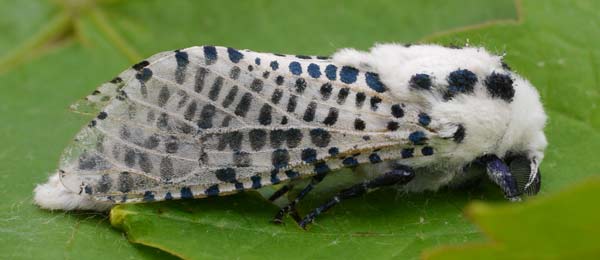
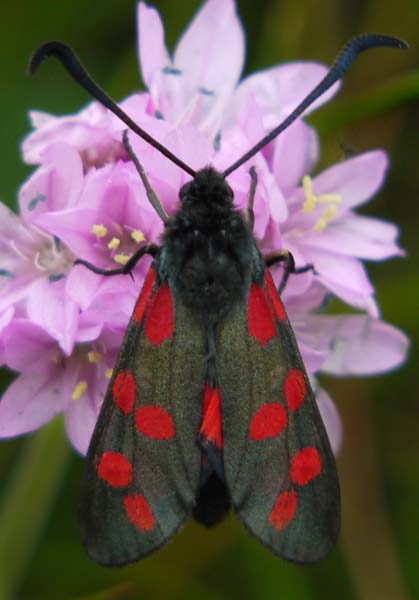
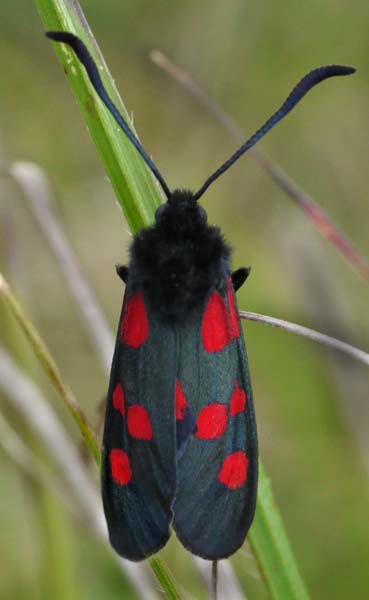


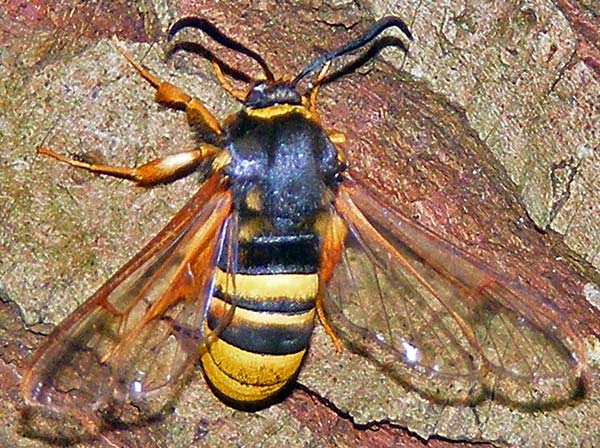

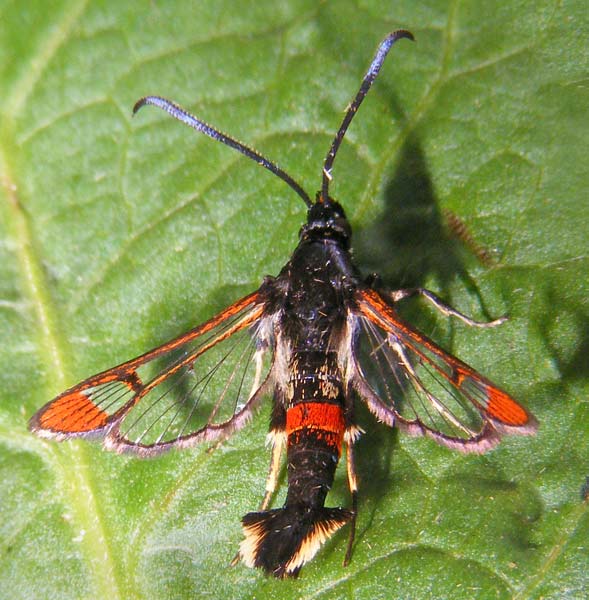
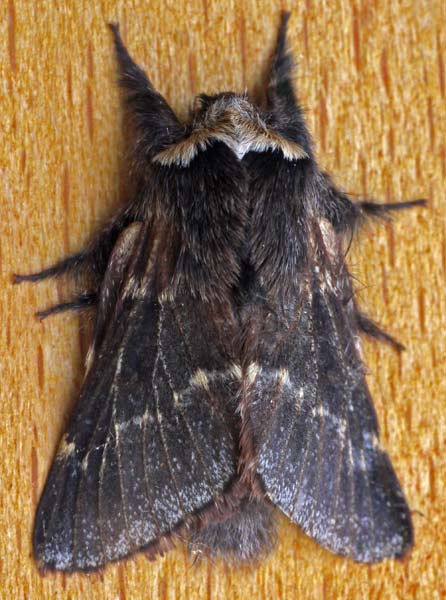



Male
